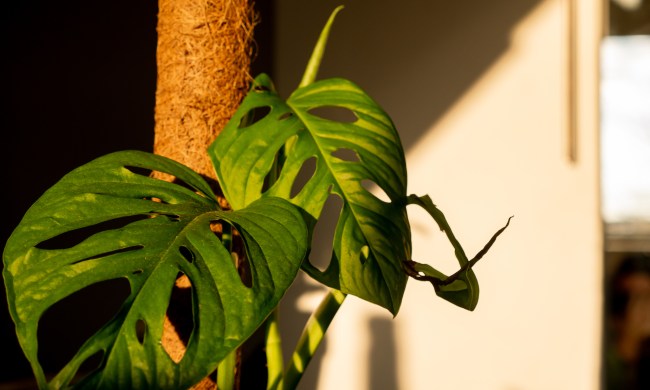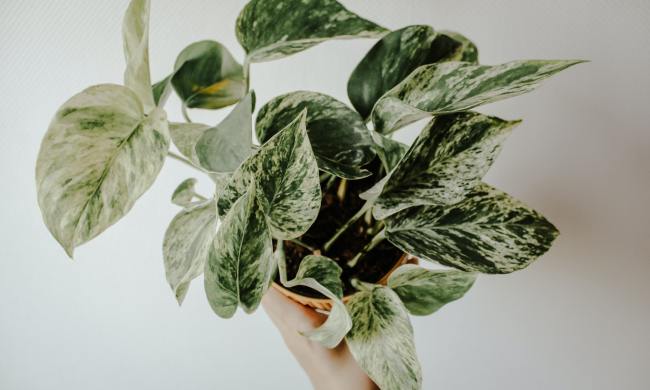There are over 20,000 varieties of ferns around the world, and most of them can be grown both outdoors and indoors! Since they come in a variety of shapes, textures, and colors, a potted fern will add a nice touch of greenery and life to an indoor space especially when the right fern care system is established. Not all types of ferns are ideal for growing indoors, but these four are! Whether you’re an expert gardener or are just starting today, you can easily grow any of these four types of ferns.
Bird’s nest fern

Lending reason to their name, bird’s nest ferns are found in palm trees when in their native environment. They make the most unique houseplant when provided the right indoor environment. Bird’s nest ferns have large, tropical-like fronds that are similar to the look of banana leaves. They’re crinkled and wrinkly, adding a fun touch to your indoor collection.
Caring for your bird’s nest fern
Warmth and moisture will be your best friends when growing an indoor potted bird’s nest fern. That means some of the best places for bird’s nest ferns are in your bathroom! Whether on a windowsill by the tub or on a ledge near the shower, the warmth, humidity, and moisture created in a bathroom will be an ideal home environment. Bird’s nest ferns prefer indirect/filtered light to light shade, so avoid setting it in direct light, but be sure the space you choose has an adequate amount of lighting during the day.
As with many other plants, the bird’s nest fern doesn’t want to sit in soggy soil. Be cautious of overwatering the plant. They prefer their soil to be moist, so you never want to drench the fern — but don’t let it dry out completely, either. If you aren’t used to keeping soil moist, it may take a bit to get the hang of it. Whenever you do water, you want to water the soil directly. Any water that collects in the bottom of the plant could cause mold, rot, and an untimely demise.
Button fern

Button ferns, on the other hand, require little care to thrive in an indoor environment. As far as potted ferns go, this will be one of the easier ones for beginners to handle. Because their fronds are covered in small round leaves, they make a beautiful focal plant for any end table, plant stand, or windowsill! As long as you place it in a brightly lit room (and out of direct sunlight), you’re free to place the potted fern wherever you wish, and it should grow fairly well. It’s a favorite for hanging plant baskets that allow the leaf-covered fronds to trail and cascade as they wish.
Caring for your button fern
Button ferns, like many other ferns, prefer bright, indirect light. They do have a higher tolerance for colder temperatures, but they dislike frost. If you have windows that tend to freeze over during the colder weather, it would be best to keep your button fern away from them.
Unlike the bird’s nest fern, the button fern likes its soil to dry out a bit between watering. You still don’t want to create soggy soil, so it’s best to use a well-draining potting mix and a container that has good drainage. The amount and frequency of which your button fern needs water can vary depending on the humidity and temperature of its environment. This means a little trial and error may be in order to figure out the right watering balance.
When you do water your button fern, water thoroughly and wait until at least the first inch of soil dries out before watering again. If your fronds are yellow and wilting, that means you’re overwatering the fern. You’ll want to ease up on watering, and potentially trim off the damaged bits. If your plant continues to wilt, check the roots to see if any of them have rotted. If only a few have rotted, trim off any damaged pieces. If the roots are mostly black, the fern is unfortunately too far gone.
Maidenhair fern

There’s a pattern with indoor ferns: Many of them thrive best in bright, indirect lighting — and the maidenhair fern is no exception. They have feather-like foliage and are a gray-green color, adding some charm to any indoor setting. Growing maidenhairs are relatively easy, and they look great as a stand-alone houseplant or in a group of friends!
Caring for your maidenhair fern
Maidenhair ferns are more hardy than tropical, but it can still be difficult to keep them healthy indoors if you don’t have the right conditions. The most important factor for maidenhair ferns is humidity; they need a decent amount of moisture to survive. The best chance at keeping a healthy, happy maidenhair fern indoors will be providing it with moisture in various ways. You can get a humidifier to add moisture in the room, or mist the plant a couple times a days with warm water. Maidenhair ferns will like to be watered every other day, but you may need to adjust your care depending on how your individual plant responds.
Christmas fern

Christmas ferns are beautiful evergreen ferns that are perfect for adding a pop of greenery to any shady room.
Caring for your Christmas fern
Caring for them is easy, especially if you’re already familiar with other types of ferns. When planted outdoors, this fern can spread out to act as a ground cover, and it can grow to around 3 feet tall. It tends to stay slightly smaller indoors, since it won’t have as much room to spread out. Place your Christmas fern in indirect light or full shade and keep the soil evenly moist. Additionally, these ferns love acidic soil! Using a fertilizer for acid-loving plants is the best way to achieve their preferred soil pH while keeping them fed.
With thousands of different fern varieties, there are many more than these four that will thrive in an indoor environment. Don’t be afraid to get a different type of fern (or multiple!) to add to your indoor collection. Just be sure you care for each one the way it likes, and you’ll have the best shot at keeping them healthy and happy.



